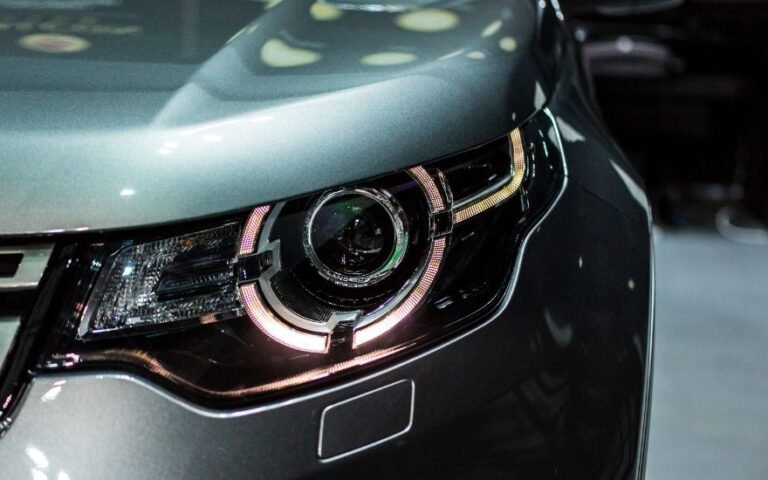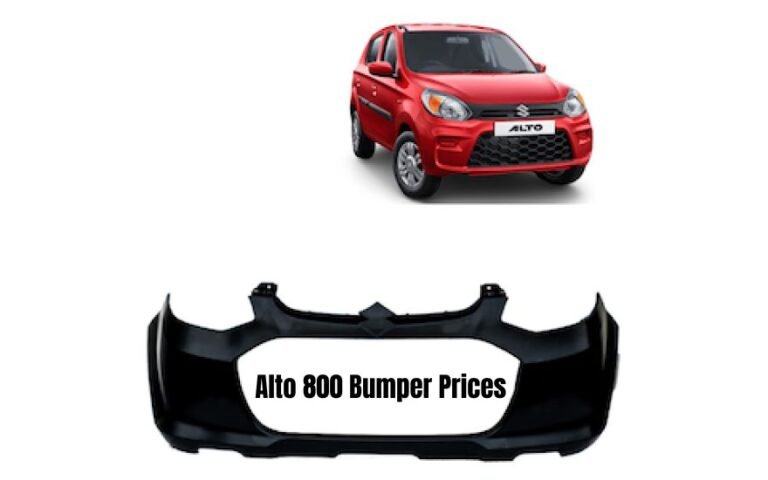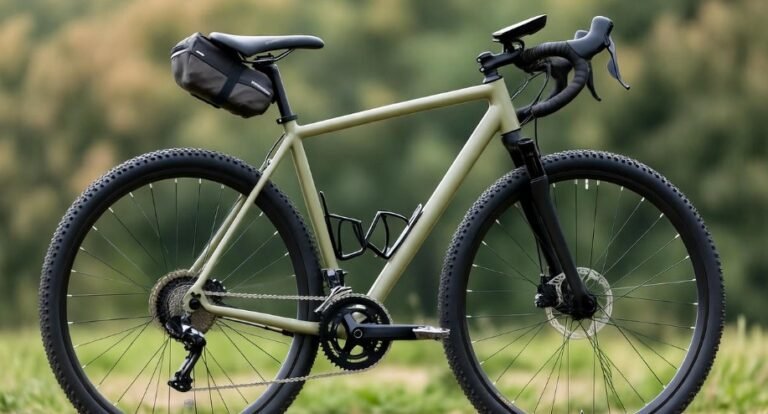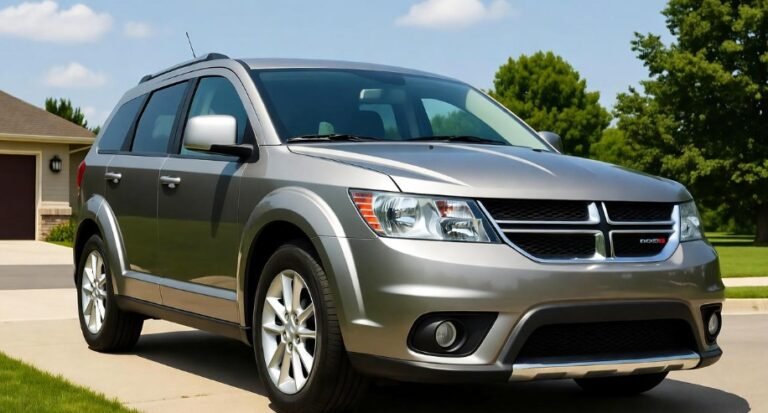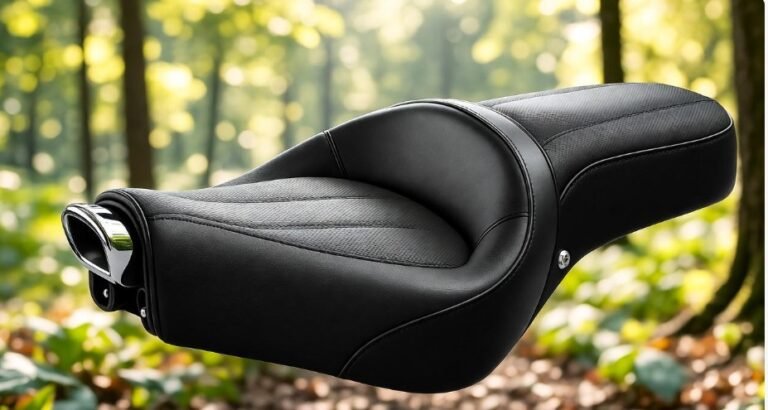Royal Enfield Classic 350 Rear Disc Brake Kit Price

The Royal Enfield Classic 350 rear disc brake kit price typically ranges from $100 to $300 for the kit itself, with professional installation adding an additional cost. Prices vary based on brand, quality, and whether it’s an OEM or aftermarket part.
In This Article
- 1 Key Takeaways
- 2 Why Upgrade to a Rear Disc Brake on Your Classic 350?
- 3 Understanding the Components of a Rear Disc Brake Kit
- 4 Factors Affecting Royal Enfield Classic 350 Rear Disc Brake Kit Price
- 5 Typical Price Ranges for a Royal Enfield Classic 350 Rear Disc Brake Kit
- 6 Where to Buy Your Classic 350 Rear Disc Brake Kit
- 7 DIY Installation vs. Professional Installation
- 8 Pro Tips: Ensuring a Smooth Upgrade
- 9 Maintenance and Longevity of Your New Disc Brake System
- 10 Frequently Asked Questions (FAQs)
- 10.1 Q1: Is a rear disc brake upgrade legal on a Royal Enfield Classic 350 in the USA?
- 10.2 Q2: Will a rear disc brake kit fit my specific Royal Enfield Classic 350 model year?
- 10.3 Q3: Can I use my existing rear wheel if I install a disc brake kit?
- 10.4 Q4: What is the difference between a hydraulic and a cable-actuated disc brake kit?
- 10.5 Q5: How much does it cost to install a rear disc brake kit on a Royal Enfield Classic 350?
- 10.6 Q6: Are there any performance advantages to using a specific brand of brake pads with the kit?
- 11 Conclusion
Key Takeaways
- Understand upfront costs for the kit.
- Factor in professional installation expenses.
- Compare OEM vs. aftermarket brake kit options.
- Research reliable brands for brake components.
- Check for compatibility with your Classic 350 model.
- Consider long-term value and performance.
Your Royal Enfield Classic 350 is a machine built for timeless rides, evoking a sense of nostalgia with every kilometer. While its classic charm is undeniable, you might be wondering about enhancing its performance, particularly its stopping power. One common upgrade for many riders is adding a rear disc brake. If you’re exploring the Royal Enfield Classic 350 rear disc brake kit price, you’re in the right place. This guide will break down the costs, factors influencing them, and what you need to know to make an informed decision. We’ll navigate the options available, from genuine Royal Enfield parts to reputable aftermarket solutions, ensuring you can stop with confidence and peace of mind.
Why Upgrade to a Rear Disc Brake on Your Classic 350?
The Royal Enfield Classic 350, in its most classic iterations, often came equipped with a drum brake at the rear. While drum brakes have served riders for decades and can be adequate for many riding conditions, they have inherent limitations compared to disc brakes. Understanding these limitations can help you appreciate why upgrades are so popular.
Drum brakes work by expanding brake shoes outwards against the inner surface of a drum attached to the wheel. This mechanism can be effective, but it’s susceptible to fade under heavy braking, especially when wet. The enclosed nature of the drum can trap heat and moisture, reducing braking efficiency. Furthermore, the modulation and feel of drum brakes can sometimes be less precise than disc brakes.
Disc brakes, on the other hand, use a caliper to squeeze brake pads against a rotating disc (rotor) attached to the wheel hub. This system offers several advantages:
- Improved Stopping Power: Disc brakes generally provide stronger and more consistent stopping power.
- Better Heat Dissipation: The exposed nature of the disc allows for better airflow, leading to less brake fade during prolonged or hard braking.
- Enhanced Wet Performance: Disc brakes tend to clear water more effectively than drum brakes, maintaining better performance in rainy conditions.
- Superior Feel and Modulation: Riders often report a more precise and responsive feel with disc brakes, allowing for finer control.
- Modern Aesthetics: For some, a disc brake setup offers a more contemporary look.
For riders who push their Classic 350 a bit harder, tackle varied terrain, or simply prioritize maximum safety and control, upgrading to a rear disc brake is a sensible modification. This is where understanding the Royal Enfield Classic 350 rear disc brake kit price becomes crucial.
Understanding the Components of a Rear Disc Brake Kit
Before diving into pricing, it’s helpful to know what typically comes in a rear disc brake kit for a Royal Enfield Classic 350. Most kits are designed to replace the existing drum brake assembly and often include:
- Brake Caliper: The hydraulic component that houses the brake pads and applies pressure.
- Brake Pads: The friction material that contacts the rotor.
- Brake Rotor (Disc): The metal disc that attaches to the wheel hub and rotates with it.
- Master Cylinder: If your bike doesn’t have a compatible one, a new master cylinder might be included to generate hydraulic pressure.
- Brake Lines: Hoses that carry brake fluid from the master cylinder to the caliper.
- Mounting Brackets: Specialized hardware to attach the caliper to the swingarm or frame.
- Hardware: Bolts, nuts, and washers needed for installation.
Some kits might be more comprehensive than others, and some might assume you already have certain components (like the master cylinder or brake lines if you’re upgrading from a previous disc setup). Always check the kit’s description carefully to know exactly what you’re getting.
Factors Affecting Royal Enfield Classic 350 Rear Disc Brake Kit Price
The Royal Enfield Classic 350 rear disc brake kit price isn’t a single, fixed number. Several factors influence where you’ll land on the price spectrum. Understanding these will help you budget effectively and choose the best option for your needs.
1. Brand and Manufacturer
Like most automotive parts, the brand plays a significant role in pricing. Established, reputable brands that are known for their quality and performance often command higher prices. These brands invest heavily in research, development, and quality control, ensuring their products are reliable and meet stringent safety standards. Examples of brands that might offer such kits include:
- Genuine Royal Enfield Parts: Often the most expensive option, but guarantee perfect fitment and adherence to factory specifications.
- Reputable Aftermarket Brands: Companies specializing in motorcycle performance parts or braking systems (e.g., Brembo, Galfer, EBC for high-performance options; other specialized Royal Enfield aftermarket suppliers). These can offer excellent value, balancing quality with cost.
- Generic or Lesser-Known Brands: These might offer the lowest upfront price but can sometimes come with risks regarding quality, durability, and actual performance.
2. Kit Inclusions
As mentioned earlier, the number and type of components included in the kit significantly impact the price. A basic kit might only include the caliper, rotor, and pads. A more comprehensive kit, which might be necessary for bikes that originally had drum brakes, could also include the master cylinder, brake lines, and all necessary mounting hardware. If you need to purchase these separately, the total cost will naturally be higher.
3. Material Quality and Technology
The materials used in the brake components affect both price and performance. For instance:
- Rotors: High-carbon stainless steel rotors are common and offer good performance. Some premium kits might use more advanced materials or designs (like wave rotors) for better heat dissipation and weight reduction, increasing the price.
- Calipers: While most common calipers are cast iron or aluminum, higher-end options might feature forged aluminum for strength and lightness, or advanced piston designs.
- Brake Pads: Different pad compounds (organic, semi-metallic, metallic/sintered) offer varying levels of performance, durability, and price. Sintered pads, for example, are generally more expensive but offer superior performance in extreme conditions.
4. OEM vs. Aftermarket
Original Equipment Manufacturer (OEM) parts are made by or for Royal Enfield. They are designed to fit your Classic 350 perfectly and meet the brand’s specific standards. However, OEM parts often come at a premium price. Aftermarket parts are made by third-party companies. They can range from direct replicas of OEM parts to performance-oriented upgrades. Aftermarket options can often provide better value, and in some cases, superior performance, but it’s essential to choose reputable manufacturers.
5. Model Year and Specificity
While the Classic 350 is a consistent model, there can be minor variations between model years. Ensuring the kit is specifically designed for your Classic 350’s year is crucial for proper fitment and function. Sometimes, kits designed for slightly different variations of the Classic 350 might be available at different price points, though compatibility should always be the primary concern.
6. Supplier and Location
Where you purchase the kit also impacts the price. Online retailers, specialized motorcycle parts stores, and authorized Royal Enfield dealerships will have different pricing structures. Shipping costs and import duties (if buying internationally) can also add to the final price. For U.S.-based buyers, purchasing from a U.S. distributor or retailer might offer more competitive pricing and faster shipping compared to ordering directly from India, for example.
Typical Price Ranges for a Royal Enfield Classic 350 Rear Disc Brake Kit
Given the factors above, here’s a general breakdown of what you can expect to pay for a Royal Enfield Classic 350 rear disc brake kit price. These are approximate figures and can fluctuate based on sales, promotions, and specific product lines.
Basic Aftermarket Kits:
- Price Range: $100 – $180
- Description: These kits typically include a standard caliper, rotor, and pads, often from lesser-known but functional aftermarket brands. They might require using some of your existing hardware or sourcing a master cylinder separately if not included. Fitment might be good, but long-term durability and performance under extreme stress could be a concern for demanding riders.
Mid-Range Aftermarket Kits:
- Price Range: $180 – $280
- Description: These kits usually come from more established aftermarket manufacturers. They often include higher-quality rotors (e.g., stainless steel), better-compound brake pads, and a more robust caliper. Mounting brackets and necessary hardware are generally included. These offer a good balance of performance, durability, and value for the average rider.
Premium Aftermarket or Genuine OEM Kits:
- Price Range: $280 – $400+
- Description: This category includes kits from well-known performance brands or genuine Royal Enfield parts. They often feature advanced materials, superior engineering (e.g., lighter calipers, performance rotors), and exceptional braking performance. These are for riders who demand the best and are willing to pay for it.
Installation Costs:
- Price Range: $50 – $150 (approximately)
- Description: If you’re not performing the installation yourself, a professional motorcycle mechanic will charge for their labor. This cost can vary depending on the complexity of the job and the shop’s hourly rate. It’s always a good idea to get a quote beforehand.
Example Price Comparison Table
Here’s a hypothetical comparison of different types of kits:
| Kit Type | Estimated Price Range (USD) | Typical Inclusions | Pros | Cons |
|---|---|---|---|---|
| Basic Aftermarket (Generic) | $100 – $180 | Rotor, Caliper, Pads | Lowest upfront cost | Potentially lower quality materials, durability concerns |
| Mid-Range Aftermarket (Reputable Brand) | $180 – $280 | Rotor, Caliper, Pads, Mounting Hardware | Good balance of performance and value, reliable brands | May require separate master cylinder/lines if not included |
| Premium Aftermarket (Performance Brand) | $250 – $350+ | High-spec Rotor, Performance Caliper, Advanced Pads, Hardware | Best performance and stopping power, premium materials | Highest cost, might be overkill for casual riders |
| Genuine Royal Enfield OEM (if available) | $280 – $400+ | As per Royal Enfield specifications | Guaranteed fitment and quality, matches original design | Often the most expensive, might not offer performance upgrades |
Where to Buy Your Classic 350 Rear Disc Brake Kit
Finding a reliable source for your Royal Enfield Classic 350 rear disc brake kit is as important as choosing the kit itself. Here are some common places to look:
- Authorized Royal Enfield Dealerships: If you prefer OEM parts or want expert advice directly from the manufacturer’s representatives, your local dealership is a good starting point.
- Specialty Motorcycle Parts Online Retailers: Websites dedicated to motorcycle parts often carry a wide selection of aftermarket kits. Look for established retailers in the USA that specialize in Royal Enfield or general motorcycle performance parts. Examples include RevZilla, Cycle Gear (which also has physical stores), and other reputable online stores.
- Third-Party E-commerce Platforms: Sites like Amazon and eBay can have a vast array of options, often including very budget-friendly choices. However, exercise caution and thoroughly vet sellers and product reviews to ensure you’re buying a quality product and not a counterfeit or substandard item.
- Royal Enfield Enthusiast Forums and Communities: Members of these communities often share recommendations for parts suppliers and specific kits they’ve used successfully. This can be an invaluable resource for finding trusted sources and avoiding costly mistakes. Websites like Reddit’s r/RoyalEnfield can be a good place to start.
- Direct from International Suppliers: Some specialized suppliers in India or other regions may offer kits directly. While this can sometimes lead to lower prices, factor in international shipping costs, potential import duties, and longer delivery times. Ensure the supplier has a good reputation for international sales and customer service.
DIY Installation vs. Professional Installation
The Royal Enfield Classic 350 rear disc brake kit price doesn’t have to include professional installation. If you’re mechanically inclined, many of these kits are designed for DIY installation. However, it’s a job that requires precision and the right tools.
DIY Installation:
- Pros: Significant cost savings on labor. The satisfaction of doing the work yourself. You learn more about your bike.
- Cons: Requires specialized tools (e.g., torque wrenches, brake bleeding kits). A steep learning curve if you’re new to motorcycle mechanics. Mistakes can be costly and dangerous. Time-consuming.
If you plan to do it yourself, ensure you have access to a service manual for your specific Classic 350 model. You can often find detailed installation guides and videos online from other enthusiasts or manufacturers. For instance, resources like the Royal Enfield Owner’s Manual (though not always specific to aftermarket parts) provide foundational knowledge about your motorcycle’s systems.
Professional Installation:
- Pros: Peace of mind knowing the job is done correctly by experienced professionals. Saves you time and potential frustration. Most shops offer a warranty on their labor.
- Cons: Adds significant cost to the overall upgrade. Requires finding a trustworthy and skilled mechanic.
When seeking a mechanic, look for one familiar with Royal Enfield motorcycles. A reputable shop will typically charge between $50 and $150 for the installation, depending on your location and their rates. Always ask for a quote before authorizing the work.
Pro Tips: Ensuring a Smooth Upgrade
Pro Tip: Always bleed your brakes thoroughly after installation. Residual air in the brake lines can lead to a spongy lever and reduced braking performance, compromising safety. Follow the kit manufacturer’s instructions or consult a service manual for the correct bleeding procedure.
Maintenance and Longevity of Your New Disc Brake System
Once you’ve invested in a rear disc brake kit, proper maintenance will ensure its longevity and optimal performance. Regular checks are essential for safety and to get the most out of your upgrade.
- Regular Inspection: Periodically check the brake pads for wear. Most pads will have a minimum thickness indicator. Also, inspect the rotor for any scoring, warping, or damage.
- Brake Fluid: Brake fluid absorbs moisture over time, which can reduce its boiling point and lead to corrosion. It’s recommended to flush and replace the brake fluid every 1-2 years, or as per the manufacturer’s recommendation. Use the type of fluid specified by the kit manufacturer (usually DOT 3 or DOT 4).
- Cleaning: Keep the caliper and rotor area clean. Dirt and debris can accelerate wear and affect performance. A brake cleaner spray can be used cautiously, ensuring it doesn’t contaminate other parts of the bike.
- Pad and Rotor Replacement: When brake pads reach their wear limit, replace them promptly. If the rotor is significantly worn, grooved, or warped, it should also be replaced to ensure proper function and prevent damage to new pads.
- Listen for Noises: Unusual grinding, squealing, or clicking sounds from the braking system should be investigated immediately by a qualified mechanic.
By performing these simple maintenance tasks, you can ensure your new rear disc brake system remains effective and safe for many miles to come, complementing the reliable performance of your Royal Enfield Classic 350.
Frequently Asked Questions (FAQs)
Q1: Is a rear disc brake upgrade legal on a Royal Enfield Classic 350 in the USA?
A: In most states in the USA, upgrading to a disc brake is legal, as it’s considered an enhancement to safety. However, regulations can vary slightly by state, and it’s always a good idea to check your local Department of Motor Vehicles (DMV) or equivalent agency if you have concerns. Generally, any modification that improves safety like better brakes is permissible.
Q2: Will a rear disc brake kit fit my specific Royal Enfield Classic 350 model year?
A: It is crucial to purchase a kit specifically listed as compatible with your Classic 350’s model year. While the overall design is consistent, minor changes in swingarm or hub designs between years can affect fitment. Always double-check the product description or consult the seller to confirm compatibility.
Q3: Can I use my existing rear wheel if I install a disc brake kit?
A: Most kits are designed to work with the stock rear wheel. However, the wheel must have the correct provisions for mounting the brake rotor and accommodating the caliper. Some kits might require a different hub or a wheel specifically designed for disc brakes. Check the kit’s specifications carefully.
Q4: What is the difference between a hydraulic and a cable-actuated disc brake kit?
A: The kits discussed here are typically hydraulic, using brake fluid to actuate the caliper. Some older or simpler systems might use a cable, similar to bicycle brakes, but these offer significantly less stopping power and feel. For a Classic 350 upgrade, hydraulic systems are the standard and recommended choice for effective braking.
Q5: How much does it cost to install a rear disc brake kit on a Royal Enfield Classic 350?
A: Professional installation typically costs between $50 and $150, depending on your location and the mechanic’s labor rates. This cost is in addition to the price of the kit itself.
Q6: Are there any performance advantages to using a specific brand of brake pads with the kit?
A: Yes, definitely. Different brake pad compounds (organic, semi-metallic, sintered) offer different performance characteristics. For example, sintered pads offer superior stopping power and heat resistance but can wear rotors faster and might be noisier. Organic pads are quieter and gentler on rotors but may fade sooner under heavy use. Your choice of pads should align with how you ride your Classic 350.
Conclusion
Upgrading your Royal Enfield Classic 350 with a rear disc brake can significantly enhance your riding experience, providing improved stopping power, better control, and greater confidence on the road. The Royal Enfield Classic 350 rear disc brake kit price can vary widely, typically ranging from around $100 for basic aftermarket options to $300 or more for premium or genuine parts. When making your decision, consider not just the upfront cost but also the quality of materials, the reputation of the brand, and whether professional installation is required. By carefully researching your options and understanding what each kit offers, you can find a solution that perfectly balances performance, safety, and your budget. Enjoy the added peace of mind that comes with superior braking capability on your beloved Classic 350.

